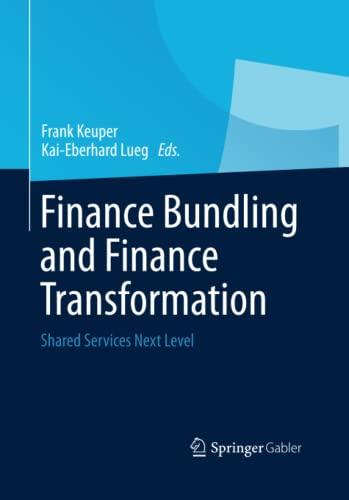Question
Waltham, Inc., a publicly traded firm, is considering the acquisition of a private company, Artforever.com, which specializes in restoring damaged artwork and vintage photographs for
Waltham, Inc., a publicly traded firm, is considering the acquisition of a private company, Artforever.com, which specializes in restoring damaged artwork and vintage photographs for high net worth individuals. Walthams CEO and chairman of the board, Willie Ray, described the motivation for the acquisition as follows: We are running out of profitable investment opportunities in our core vintage shoe restoration business, and our shareholders expect us to continue to grow. Therefore, we must look to acquisitions to expand into growing markets.
Waltham, Inc.s common stock is currently trading at $50 per share, and the firm has 100,000 shares outstanding. The book value of the common stock is $20 per share. However, as mentioned by Mr. Ray, sales had been slowing recently and the board was concerned that soon the share price would also begin to flag as investors figured out that the firm was running out of positive NPV investments. The firm has $2,000,000 market value of bonds trading at a yield to maturity of 6.2%.
You have been hired as a consultant to Waltham to evaluate the proposed acquisition of Artforever.com. There is considerable dissension among senior management and the board about whether the acquisition should be undertaken. Your job is to perform a thorough analysis of the merits of the proposed acquisition and make a recommendation to senior management.
After several meetings with Waltham management and a review of Artforevers financial performance and industry structure, you gathered the data shown in Table 1 below.
Forecast Data for Artforever.com (in $000)
| 2017 | 2018 | 2019 | 2020 | 2021 | |
| Sales Revenue | 1,000.00 | 1,250.0 | 1875.0 | 2,100.0 | 3,750.0 |
| Investment in CapEx and NWC | 25.0 | 55.0 | 170.0 | 80.0 | 80.0 |
| Depreciation | 15.0 | 30.0 | 50.0 | 72.0 | 80.0 |
| Interest Payments | 94.4 | 101.4 | 108.6 | 115.9 | 122.4 |
Your research indicates that Artforever has a target debt to value ratio of 15%, based on its assessment of the probability and costs of financial distress. You note that this is different from the capital structure of Waltham and wonder how this would factor into your analysis.Artforever.com currently has $1,475,000 (market value) in long-term debt, with a coupon rate of 7%. Its cost of goods sold (COGS) is expected to be 42% of sales revenues, and selling, general and administrative (SG&A) expenses are expected to be 15 percent of revenues. The depreciation numbers listed above are already included in COGS percentage estimates. The firms corporate tax rate is 40% and its current cost of borrowing is 6.2%.
Although Artforever.com is a rapidly growing company, your analysis of industry structure suggests that competition in the art restoration market is likely to increase in the next few years. Thus, you forecast that the perpetual growth rate for free cash flows beyond 2021 will be a more modest 2.0% per year.
Your analysis of market data yielded the information in Table 2 below.
Market Data
| Current yield to maturity on 30 year treasury bonds | 2.50% |
| Current yield to maturity on 3 month treasury bills | 2.0% |
| Most recent 1-year return on the S&P 500 | 5.3% |
| Estimate of expected average return on the S&P 500 over the next 30 years | 8.0% |
Your analysis of Artforever.coms industry reveals that most of the firms in the industry, like Artforever, are private firms. However, you find a close competitor, ArtToday.net, that is in the same line of business and is publicly traded. ArtToday has a long-term target debt to equity ratio of 0.75, and has been historically quite close to that target. Your analysis of ArtTodays historical returns against the market returns yields an equity beta of 1.5. ArtToday currently has 50,000 common shares outstanding trading at $12 per share.
What discount rate is appropriate for finding the value of Artforever.com?
My professor stated that we need to unlever the beta using Art Today's capital structure and then re-lever the beta using Artforever.com's capital structure. We should also be utilizing Artforever.com's given debt-to-value ratio in our WACC calculation. I don't understand what is meant by this....can anyone help me? Please show detailed computations in an Excel spreadsheet (one with formulas and one with calculations) so I can learn.
Step by Step Solution
There are 3 Steps involved in it
Step: 1

Get Instant Access to Expert-Tailored Solutions
See step-by-step solutions with expert insights and AI powered tools for academic success
Step: 2

Step: 3

Ace Your Homework with AI
Get the answers you need in no time with our AI-driven, step-by-step assistance
Get Started


